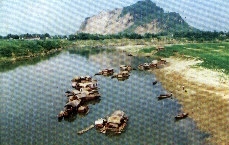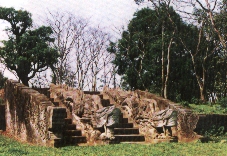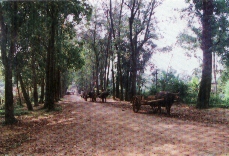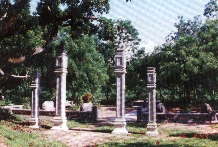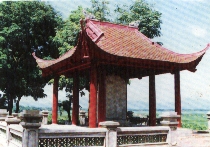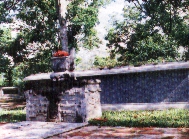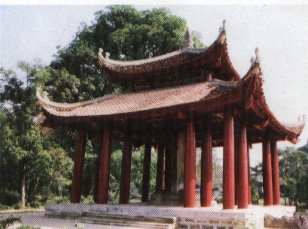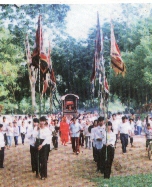King Le Loi |
The area known as Vietnam's Lam Kinh historical place of
interest is located in Tho Xuan District of central Vietnam's Thanh Hoa Province.
Lam Kinh was the second capital of the late Le Dynasty, built in the native
country of Le Loi, the national Vietnamese hero and first king of the Le
Dynasty, and where the Lam Son insurrection originated.
Lam Kinh borders the Dau Mountains in the north and the Chu River and Muc Mountain to the south with high mountains and extended forests on both sides, creating a panorama with vivid landscape and mountains. Lam Kinh is divided into two parts. The first one is the Palace and Temple (Thai Mieu) and the second is the mausolea of the Kings and Queens of the earlier Le Dynasty. |

